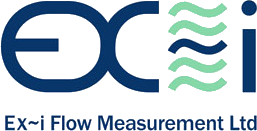Coriolis mass flow meters measure the mass flow and density of liquids such as water, acids, caustic, chemicals and gases/vapors.
The coriolis mass flow meter tubes are designed so they are linear and dip into a ‘U’ shape (perpendicular to the flow direction), to then carry on in a linear direction. Coriolis forces are generated when the fluid flows through the tubes and oscillate and twist perpendicular to the direction of the flow movement, i.e. the fluid flows through the tubes and the ‘U’ shape part of the tubes swings and twists creating coriolis forces. Sensors on the inlet and outlet ends register the shift in swinging and twisting geometry, which is proportional to the fluid (mass) flow rate passing through the tubes and displayed by the processor. The swinging frequency is a measure of the fluid’s density and the temperature of the tube is measured for compensating thermal influences.
Because coriolis mass flow meters produce extremely accurate measurements they are often used to measure products of high value. Industries that use coriolis mass flow meters include pharmaceuticals, food, water, mining, chemicals and petrochemicals, mineral processing, oil and gas, power, and pulp and paper.
There are self-evident advantages of coriolis flow meters:
• They measure several variables simultaneously, such as mass flow, density and temperature, and can be used to derive other variables such as volume flow, solid contents, concentrations, and complex density functions.
• They are not temperature dependent so measurements do not require correction if fluid variables change, such as temperature, pressure, viscosity and density.
• They are renowned for their accuracy and high reliability because there are no moving parts in the flow path, which consequently means they need virtually no maintenance.
